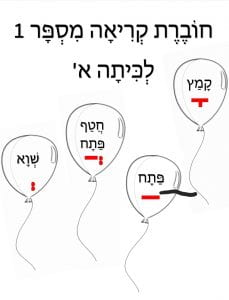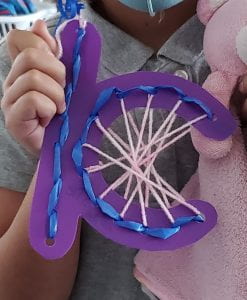Shalom Kitah Alef families,
I am excited to let you know that as of today, we completed all of the Alef-Bet with the sound ah. I am so very proud of my students for working so hard, together and independently, at becoming great readers.

This week’s homework includes the following (Recordings are in my Bitmoji Classroom):
Monday: p.19 Chaf Sofit
Tuesday: p.20 Story – Lines 1-5
Wednesday: p.20 Story – Lines 6-10
Thursday: p.20 Story – Lines 11-16
I always wonder how to better improve my teaching of reading and this past Sunday, I took part in an online zoom lecture from Israel about strategies for learning the Aleph Bet and their sounds (before getting into the vowels themselves) by Shimrit Mince – an expert for learning strategies. The lecture focused on memory supporters for letter recognition – focusing on the need to teach the letters and their sound in a way that supports both the visual and the auditory memory for the optimal recall.
It was reassuring to see that many of the strategies discussed went hand-in-hand with much of what I already do in our lessons – having the students listen to words and asking them for the opening sound (not letter), then writing/tracing the letter and finally, showing pictures of objects/animals/plants/etc that begin with the sound learned.
Mince’s focus for students who struggle with letter recognition was to use pictures that both begin with the letter (any of the sounds/vowels at this point) and have a part that looks like it. For example for the letter Peh (פ), you show a פיל = PIL (elephant) where the trunk is rounded up into a פ. An important aspect was that the child then needed to explain the connection (with leading questions by the teacher/parent), rather than simply told what it is.
I like this strategy very much; however, it is a bit more complex when teaching it as second/third language, primarily because the students have an extra step – memorizing new vocabulary in order to memorize the sound AND what it looks like. I find that students remember the name of the letter faster than the name of the object, probably because their brain has only that one word for the letter but another (in English) for the object.
For me, this is another strategy to try and incorporate when needed and when possible… something to think about… I am looking forward to her lecture about adding the voweks…
Don’t forget, a good way to practice recognizing the letters is to listen and look at the Alef-Bet song I have in my Bitmoji classroom (have your child sing it without the sound). Repetition, repetition repetition. The song is a first step. Our aim is that they recognize the letters when not in order.
Have a lovely week.

 All this to say… routines work magic…
All this to say… routines work magic…  This week We are introduced to the sounds Chah, Ch, Nah and Nh.
This week We are introduced to the sounds Chah, Ch, Nah and Nh. 



